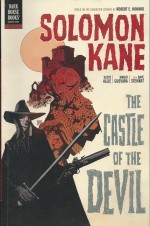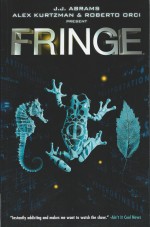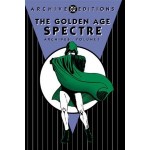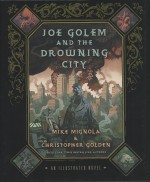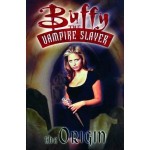
By Leo Dorfman & various (DC Comics)
ISBN: 978-0-85768-836-1
Boo! Win’s Christmas Gift Recommendation: a perfect slice of sinister comics spookiness for everyone… 8/10
American comicbooks started rather slowly until the invention of superheroes unleashed a torrent of creative imitation and established a new entertainment genre. Implacably vested in World War Two, the superman swept all before him (occasional her or it) until the troops came home and the more traditional themes and heroes resurfaced, and eventually supplanted the Fights ‘n’ Tights crowd.
Whilst a new generation of kids began buying and collecting, many of the first fans also retained their four-colour habit but increasingly sought older themes in their reading matter. The war years had irrevocably altered the psychological landscape of the readership and, as a more world-weary, cynical young public came to see that all the fighting and dying hadn’t really changed anything, their chosen forms of entertainment (film and prose as well as comics) increasingly reflected this.
As well as Western, War and Crime comics, celebrity tie-ins, madcap escapist comedy and anthropomorphic funny animal features were immediately resurgent. Gradually another cyclical revival of spiritualism and public fascination with the arcane led to a wave of impressive, evocative and shockingly more-ish horror comics. These spanned the range from EC and Simon & Kirby’s astoundingly mature and landmark scary fictions to grotesquely exploitative eerie episodes from pale imitators and even wholesome, family-friendly fear tales from the industry’s biggest players.
The company that would become DC Comics bowed to the inevitable and launched a comparatively straight-laced anthology that nevertheless became one of their longest-running and most influential titles with the (December 1951/January 1952) release of The House of Mystery, at the same time turning venerable anthology Sensation Comics (the magazine that had starred Wonder Woman since 1942) into a fantasy vehicle with he-men such as Jonny Peril battling the encroaching unknown with issue #107.
That conversion was completed when the title became Sensation Mystery with #110 in July 1952.
Everything changed when a hysterical censorship scandal and governmental witch-hunt created a spectacular backlash (feel free to type Senate Subcommittee on Juvenile Delinquency, April- June 1954 into your search engine at any time… You can do that because it’s more-or-less still a free country).
The crisis was curtailed by the industry adopting a castrating straitjacket of self-regulatory rules. Horror titles produced under the aegis of the Comics Code Authority became sanitised, anodyne affairs in terms of Shock and Gore, even though the appetite for suspense was still high. For example: in 1956 National introduced the sister title House of Secrets which debuted with a November-December cover-date and specialised in taut human interest tales in a fantasy milieu.
Stories were dialled back into marvellously illustrated, rationalistic, fantasy-adventure vehicles which dominated the market until the 1960s when super-heroes (which had started to creep back after Julius Schwartz began the Silver Age of comics by reintroducing the Flash in Showcase #4, 1956) finally overtook them. When the cape-and-cowl craziness peaked and popped, sales began bottoming out for Costumed Dramas and comics faced another punishing sales downturn.
Nothing combats censorship better than falling profits. As the end of the 1960s saw the superhero boom end with so many titles dead and some of the industry’s most prestigious series circling the drain too, the publishers took drastic action.
This real-world Crisis led to the surviving players in the field agreeing to loosen their self-imposed restraints against crime and horror comics. Nobody much cared about gangster titles but as the liberalisation coincided with another bump in public interest in all aspects of the Worlds Beyond, the resurrection of spooky stories was a foregone conclusion and obvious “no-brainer.â€
Even ultra-wholesome Archie Comics re-entered the field with their rather tasty line of Red Circle Chillers…
Thus, with absolutely no fanfare at all, spooky comics came back to quickly dominate the American funnybook market for more than half a decade. DC started by converting The House of Mystery and Tales of the Unexpected into mystery suspense mags in 1968 and followed by resurrecting House of Secrets (August-September 1969) which had been cancelled in 1966.
Soon supernatural mystery titles were the dominant force in the marketplace and DC began a steady stream of launches along narrowly differing thematic lines. There was gothic horror romance title Sinister House of Secret Love, a combat iteration in Weird War Tales and from late summer 1970 a bold new book which proudly boasted “True Tales of the Weird and Supernatural!†and challenged readers to read on if they dared…
This first monochrome encyclopaedia of the eerie and uncanny collects the first 18 issues of Ghosts, covering like a shroud September/October 1970 to September 1973 with lead scripter and supernatural enthusiast Leo Dorfman producing most of the series’ original material for a title he is generally credited with creating.
Dorfman was one of the most prolific scripters of the era (also working as David George and Geoff Brown) and a major scripter of comic horror stories for many DC and Gold Key titles.
The thrills and chills begin with a graphic ‘Introduction’ from Tony DeZuniga – probably scripted by editor Murray Boltinoff – before ‘Death’s Bridegroom’ (Dorfman & Jim Aparo) told of a conniving bluebeard conman who finally picked the wrong girl to bilk and jilt. Sam Glanzman illustrated the fearsome tale of a shipbuilder slain while sabotaging a Nazi U-Boat who returned as a vengeful ‘Ghost in the Iron Coffin’, after which ‘The Tattooed Terror’, by John Broome, Carmine Infantino & Sy Barry, offers a slice of Golden Age anxiety from Sensation Mystery #112 (November 1952) when a career criminal is seemingly haunted by his betrayed partner.
Broome, Infantino & Frank Giacoia then relived ‘The Last Dream’ (Sensation Comics #107, December 1951-January 1952) when a 400-year old rivalry resulted in death for a 20th century sceptic, and this initial issue ends with a Western mystery in ‘The Spectral Coachman’ by Dorfman & Tony DeZuniga.
Issue #2 began with a predatory ghost-witch persecuting a Carpathian village in ‘No Grave can Hold Me’ by Dorfman, John Calnan & George Tuska, whilst ‘Mission Supernatural’ (art by Bob Brown & Wally Wood) revealed a WWII secret which perpetually plagued a modern English airport.
A brace of revered reprints begin with light-hearted romp ‘The Sorrow of the Spirits’ from House of Mystery #21 (December 1953, by Jack Miller, Curt Swan & Ray Burnley) wherein a plague of famous phantoms attempted to possess their descendents’ bodies whilst ‘Enter the Ghost’ (Joe Samachson & Ruben Moreira from House of Mystery #29, August 1954) found an actor endangered by a dead thespian jealous of anyone recreating his greatest role…
With Dorfman still writing the lion’s share of the new material, DeZuniga illustrated the sorry fate of an unscrupulous diver who was seduced by the discovery of a ‘Galleon of Death’ whilst Miller & Irwin Hasen’s ‘Lantern in the Rain’ (originally from Sensation Mystery #113, January/February 1953) recounted an eerie railroad episode, and Dorfman & Glanzman reunited to tell an original tale of ‘The Ghost Battalions’ who still haunted the world’s battle sites from Gallipoli to Korea.
Dorfman & DeZuniga visited 17th century Scotland for #3’s opening occult observation wherein a sea-born princess demanded her child back from a wicked Laird in ‘Death is my Mother’, after which ‘The Magician who Haunted Hollywood’ (George Kashdan & Leonard Starr, from HoM #10, January 1953) revealed how actor Dick Mayhew might have been aided by a deceased escapologist when he played the starring role in the magician’s bio-pic…
‘The Dark Goddess of Doom’ drawn by Calnan, revealed how a statue of Kali dealt with the ruthless collector who stole her, after which the anonymously authored ‘Station G.H.O.S.T.’ (limned by Moreira from HoM #17, August 1953) disclosed how a man’s scheme to corruptly purchase a house haunted by his ancestor went weirdly awry.
Tuska drew the saga of a WWII pilot who crashed into a desert nightmare and fatefully met a ‘Legion of the Dead’, whilst after a reprinted fact file on ‘Ghostly Miners’, Jerry Grandenetti depicted the story of a French landowner who unwisely disturbed a burial ground and met ‘The Screaming Skulls’…
Ghosts #4 began with the secret history of one of America’s most infamous killers in ‘The Crimson Claw’ (Tuska & cover artist Nick Cardy) before ‘The Ghostly Cities of Gold’ (Grandenetti) revealed the truth about fabled, haunted Cibola and the first reprint featured ‘The Man Who Killed his Shadow’ (Miller, Swan & Burnley, HoM #16, July 1953) wherein a murdered photographer reached from beyond the grave for justice.
Thereafter Ernie Chan drew ‘The Fanged Spectres of Kinshoro’ with a Big Game hunter pitting 20th century rationality against an ancient Ju-Ju threat, whilst the superb team of Bob Haney, Ramona Fradon & Charles Paris had a chance to shine again with ‘The Legend of the Black Swan’ (HoM #48, March 1956) wherein three sceptical American students in Spain have an eerie encounter with doomed 17th century sailors. This issue then concluded on ‘The Threshold of Nightmare House’ with Calnan & Grandenetti illustrating the inevitable doom of a woman who was haunted by her own ghost…
During the invasion of China in 1939 a greedy Japanese warlord met his fate – and the spirits of the Mongol warriors whose tomb he robbed. Issue #5’s lead tale ‘Death, the Pale Horseman’ (by Dorfman & Art Saaf) was followed by ‘The Hands from the Grave’ (Calnan) which somehow saved a young tourist from an early death, after which reprint ‘The Telltale Mirror’ (by an unknown author & Grandenetti from HoM #13, April 1953) showed the dread downside of owning a looking glass that reflected the future…
Original yarn ‘Caravan of Doom’ (Jack Sparling), which told of an uncanny African warrior aiding enslaved Tommies in WWI Tanganyika, was balanced by the uncredited reprint ‘The Phantom of the Fog’ (illustrated by Moreira, from HoM #123, June 1962) wherein valiant rebels overthrow a petty dictator with the apparent aid of an oceanic apparition, before Grandenetti’s ‘The Hearse Came at Midnight’ ended the issue with spoiled college frat boys learning an horrific lesson about hazing and initiation rites…
With Ghosts #6 the page count dropped from 52 to 32 pages and the reprint stories were curtailed in favour of all-new material. Proceedings began with Dorfman & Saaf’s cautionary tale of an avaricious arcane apothecary when ‘A Specter Poured the Potion’ before ‘Ride with the Devil’ (Calnan) told of a most unexpected lift for an unwary hitchhiker whilst ‘Death Awaits Me’ (Grandenetti) revealed the eerie premonition that marked the bizarre death of dancer Isadora Duncan.
A rare DC outing for mercurial comics genius Richard E. Hughes closed this slimline edition with ‘Ghost Cargo from the Sky’, illustrated by Sparling and exposing the incredible power of wishing to Pacific Islanders in the aftermath of WWII.
Michael William Kaluta stood in for Cardy as cover artist for #7 but Dorfman remained as writer, beginning with ‘Death’s Finger Points‘ (Sparling art) as a bullying Australian sheep farmer fell foul of the aborigines he’d abused, whilst President in waiting Lyndon B. Johnson was only the latest VIP to learn the cost of ignoring a Fakir’s warning in the Saaf-illustrated ‘Touch not my Tomb’. Calnan then closed things out with ‘The Sweet Smile of Death’ in a doomed romance between a 20th century photographer and a flighty Regency phantom who refused to let this last admirer go…
‘The Cadaver in the Clock’ (art by Buddy Gernale) opened Ghosts #8, as a succession of heirs learned the downside of an inheritance which perforce included a mummified corpse inside a grand chronometer, but Glanzman’s ‘The Guns of the Dead’ showed a far more beneficial side to spectres when US marines were saved by their deceased yet unstoppable sergeant in 1944. ‘Hotline to the Supernatural’, lovingly limned by the wonderful Nestor Redondo, recounted numerous cases of supernatural premonition, whilst ‘To Kill a Tyrant’ (Quico Redondo) implausibly linked the incredible last hours of Rasputin to the so-necessary death of Stalin decades later…
Issue #9 begins with Calnan’s ‘The Curse of the Phantom Prophet’ as an Indian holy man continued his war against the insolent British and rapacious white men long after his death by firing squad, ‘The Last Ride of Rosie the Wrecker’ (gloriously illustrated by Alfredo Alcala) detailed the indomitable determination of a destroyed US tank that shouldn’t have been able to move at all, and Grandenetti’s ‘The Spectral Shepherd of Dartmoor’ showed how a long-dead repentant convict still aided the weak and imperilled in modern Britain. Events end on an eerie note when vacationers see horrific apparitions but discover that ‘The Phantom that Never Was’ has created a real ghost out of a hoax disaster in a genuine chiller drawn by Bob Brown & Frank McLaughlin.
Fact page ‘Experimenters Beyond the Grave’ by Dorfman & Win Mortimer details the attempts of Harry Houdini, Mackenzie King and Aldous Huxley to send messages from the vale of shades before the storytelling resumes in #10 with the Gerry Talaoc/Redondo Studio illustrated tale of a Vietnamese Harbinger of Doom in ‘A Specter Stalks Saigon’. Increasingly a host of superb Filipino artists would take on the art chores for the ubiquitous Dorfman’s scripts such as ‘The Ghost of Wandsgate Gallows’ by Chan, which detailed the inevitable fate of an English noble who hired and then betrayed a contract killer. Although naval savant Sam Glanzman could be the only choice for the US maritime mystery ‘Death Came at Dawn’, Nestor Malgapo artfully handled the horrific saga of ‘The Hell Beast of Berkeley Square’ which for decades slaughtered guilty and innocents alike in prosperousMayfair…
Ghosts #11 opened with Eufronio Reyes (E.R.) Cruz’s contemporary thriller wherein Nazi war criminals recovering long hidden loot finally paid for their foul crimes in ‘The Devil’s Lake’, before Chan delineated a subway journey where the ‘Next Stop is Nowhere’.
Past master Grandenetti visually captured ‘The Specter Who Stalked Cellblock 13’ of San Quentin, and Bob Brown returned to illustrate the story of a church organ which killed anyone who played it in ‘The Instrument of Death’, before Jack Sparling charted the sinister coincidences of ‘The Death Circle’ which dictated that every US President elected in a year ending in zero has died in office.
Of course not everyone today is happy that the myth has been debunked…
Ghosts #12 featured ‘The Macabre Mummy of Takhem-Ahtem’ (Calnan art) which was more a traditional monster-mash than purportedly true report, after which ‘Chimes for a Corpse’ (Grandenetti) saw a German watchmaker die for his malicious treatment of an apprentice before the always amazing Glanzman-limned ‘Beyond the Portal of the Unknown’ closed proceedings in magnificent style when French soldiers in 1915 uncover a terrible tomb and unleash a centuries old vendetta of vengeance…
Dorfman & Brown opened issue #13 with ‘The Nightmare in the Sandbox’, which detailed a war of voodoo practitioners carried out in Haitian garden, whilst ‘Voice of Vengeance’ (Calnan) depicted the macabre vengeance of marionettes on the embezzling official who silenced their maker. ‘Have Tomb, Will Travel’ (Talaoc) sees contract killers who used a scrap yard to lose their latest corpse discover their brand new car comes with his unquiet spirit as an angry extra before Nestor Redondo depicts the inexplicable experience of two lost GIs who spend a night in a castle that isn’t there and endure ‘Hell is One Mile High’…
In #14 an heirloom wedding dress that came with a curse didn’t stop Diane Chapman from marrying her young man in Gernale’s ‘The Bride Wore a Shroud’, whilst ‘Death Weaves a Web’ (by George Kashdan & Chan) found a bullying uncle live to regret destroying his little nephew’s spider collection – but not for long…
‘Phantom of the Iron Horseman’ (Talaoc) saw a young train driver and a host of passengers saved from disaster by the spirit of his disgraced grandfather and the issue ends with a catalogue of global portents that warned of the appalling Aberfan tragedy in 1966 in Cruz’s ‘The Dark Dream of Death’.
Gernale opened #15 with ‘The Ghost that Wouldn’t Die’, another case of domestic gold-digging, ectoplasmic doppelgangers and living ghosts, whilst ‘A Phantom in the Alamo’ (Carl Wessler & Glanzman) revealed the ghastly fate of the American who sold out the valiant defenders to the Mexican invaders. Alcala lent his prodigious gifts to the Balkan tale of a corpse collector who abandoned morality and began profiteering from his sacred trust in ‘Who Dares Cheat the Dead?’ and Rico Rival delineated a gripping yarn wherein a corrupt surgeon was haunted by the hit-and-run victim he’d silenced in ‘Hand from the Grave’.
Ghosts #16 told of a Spanish gypsy cursed to see ‘Death’s Grinning Face’ whenever someone was going to die in a stirring thriller from Rival, and Glanzman again displayed his uncanny knack for capturing shipboard life – and death – when after 25 years a deserter finally joins his dead comrades in ‘The Mothball Ghost’. Talaoc then delineated Napoleon Bonaparte’s services to France after the Little Corporal died and became ‘The Haunted Hero of St. Helena’…
Issue #17 saw a phantom lady save flood-lost children in Dorfman & Alcala’s moving ‘Death Held the Lantern High’ after which editor Murray Boltinoff & Talaoc revealed ‘The Specters Were the Stars’ when a film company tried to capture the horror of the 1920 Ulster Uprising before Kashdan & Calnan exposed the seductive lure and inescapable power of gypsies using ‘The Devil’s Ouija’ to combat centuries of prejudice…
This first terrifying tome terminates with Ghosts #18 and Alcala’s account of a hateful Delaware medicine chief who still lured white men to his watery ‘Graveyard of Vengeance’ centuries after his death, whilst Abe Ocampo detailed the surprising ‘Death of a Ghost’ at the hands of an very smug inventor who had just moved into a haunted mansion.
Frank Redondo described how villagers in old Austria knew young Adolf would come to a bad end because the boy had ‘The Eye of Evil’ and the spookiness at last ceases with ‘Death Came Creeping’ by Ernesto Patricio & Talaoc when a visiting Egyptian merchant and his unique pet stop an American sneak thief’s predations in an age-old manner…
These terror-tales captivated the reading public and critics alike when they first appeared and it’s almost certain that they saved DC during one of the toughest downturns in comics publishing history. Now their blend of sinister mirth, classic horror scenarios and suspense set-pieces can most familiarly be seen in such children’s series as Goosebumps, Horrible Histories and their many imitators.
Everybody loves a good healthy scare – especially today or even on those dark Christmas nights to come – and this beautiful gathering of ethereal escapism is a treat fans of fear and fantastic art should readily take to their cold, unbeating hearts.
© 1971, 1972, 1973, 2011 DC Comics. All Rights Reserved.
